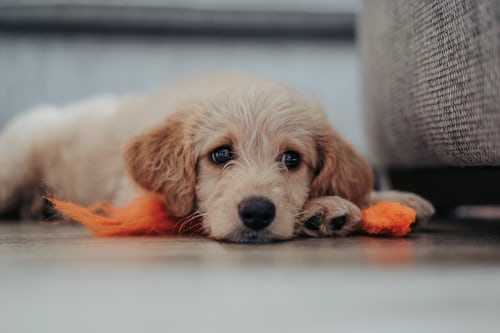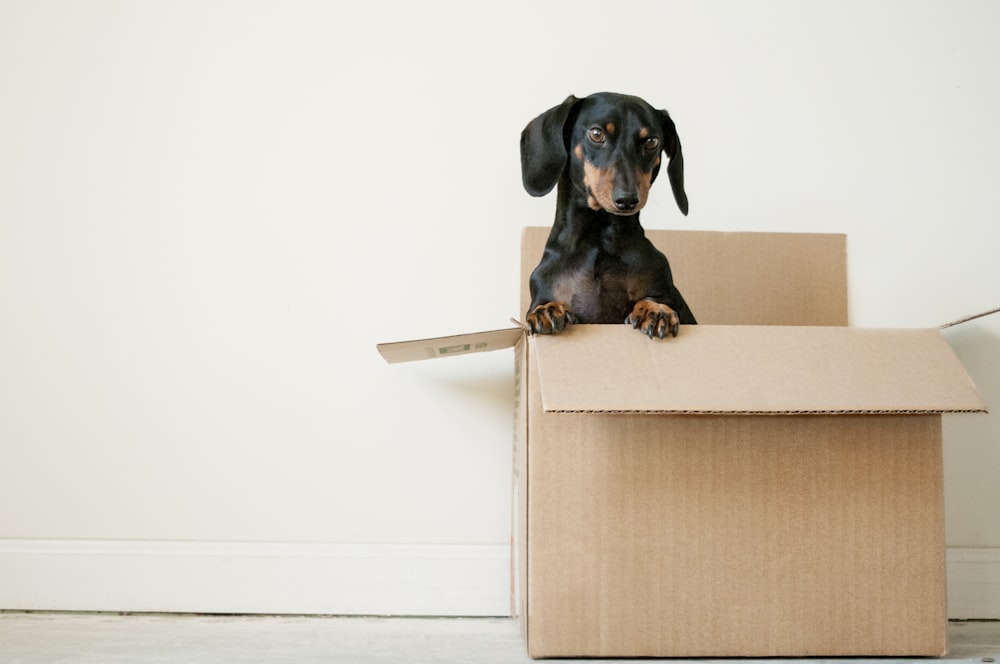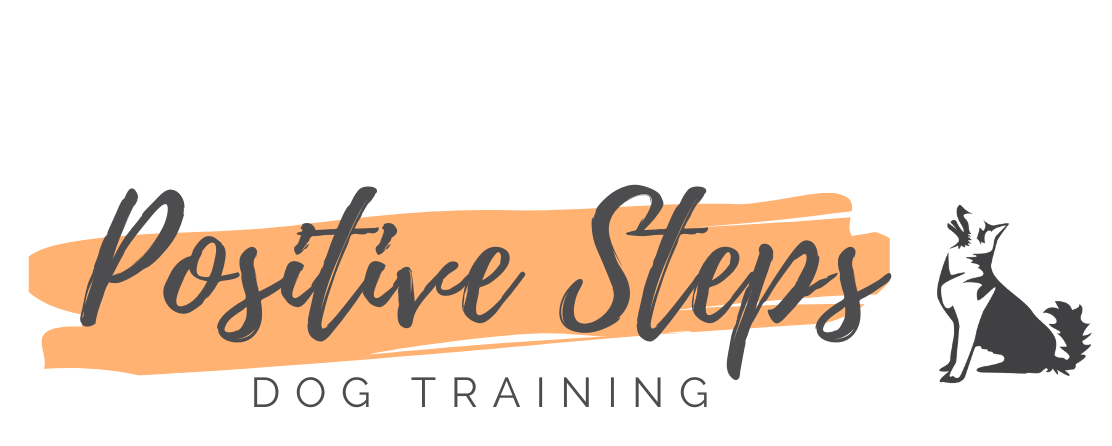
Does your dog jump at every noise? Are they shy and timid around strangers? Or are they anxious in new situations? A confident dog is a happy dog, and there are some fun training games that we can play with nervous dogs to help them feel safe and build confidence and trust. Experiencing new things in a fun and positive way will help boost your dogs confidence!
1. Free Shaping Games
Free shaping builds up a particular behaviour through a series of small steps, without using corrections. Free shaping can really help boost your dogs confidence by encouraging your dog to try something new without the worry of any consequences.
Start by placing toys, boxes, plastic bottles, pots, paper etc. down on the floor and observe how your dog interacts with them (start with only a few, and add to it later). If your dog offers behaviour you like, such as sticking their nose into the box, reward! Doing so consistently will encourage positive, inquisitive and healthy behaviours. If your dog seems wary of something but is showing slight interest, reward! As you progress through this basic exercise, you can start to add more objects of different sizes, shapes, noises and help your dog to explore them further – your dog will start to learn that exploring is fun and always leads to positive outcomes. The best part of free shaping training is that your dog can never lose, so it encourages shy/fearful dogs to try something new without the worry of something going wrong.

2. Target Training
Targeting is another simple way in which we can build our dogs confidence. Target training teaches your dog to touch a certain object and they will be rewarded. For example, teaching your dog to touch a hand with their nose can be an important step in changing how your nervous dog perceives a stranger’s outstretched hand. By focusing their attention and rewarding when they touch a hand, your dog eventually starts to see an approaching hand as something positive, not something to be feared. Again, the severity of your dogs anxiety to strangers is important here, start small, inside your home with your own hand and build slowly.
3. Agility Training
Agility training teaches dog and handler to complete an obstacle course containing jumps, seesaws, tunnels etc. together, requiring teamwork, focus and self-control. For a nervous dog, tackling such obstacles can be very scary, and so teaching a dog how to face these obstacles in a positive, fun way is another great technique to boost confidence and build on your relationship together, while also teaching your dog to focus on you and not the outside world. The focus and trust built with the handler during agility training helps the dog feel less anxious, and the self-control teaches a nervous dog to manage their emotions and not act on impulse. When introducing your nervous dog to new obstacles for the first time, it is vital that you move at your dogs pace, without moving too quickly and forcing your dog into a situation that makes them uncomfortable.

4. Teaching Tricks
Teaching basic obedience and tricks like sit, stay, hi-five, paw, spin etc. is particularly good for rescue dogs that have just come to your home. Basic training is a great way to build a bond and relationship with your new dog. Find what motivates your dog the most, be that praise, toys, food, etc. and remember to offer lots of positive reinforcement and rewards. Remember, every dog is different and what motivates one dog might not work for another, so find the games that excite your dog the most!
5. Hide and Seek/Search Games
The idea behind this game is to get the dog exploring their surroundings, so this is another good one for new rescue dogs or for dogs that seem a little nervy in certain environments. When dogs search for something, their dopamine levels (the hormone that makes them feel good) are increased. As the dog begins to understand the game, you can increase the difficulty by hiding the treats or toys in harder to reach places, to keep the dog engaged and explorative. Giving your dog something fun to focus on in an environment that may otherwise make them feel anxious is a great way to engage them and keep their mind off anything that makes them nervous.
6. Interactive Play
When we play interactive games with our dogs, its hard to go wrong – dogs LOVE our attention. Play keeps dogs mentally and physically stimulated, and can help alleviate anxiety and ‘aggressive’ behaviour. Examples of interactive play include flirt poles or fetch.

Confidence building games can be a great way to help boost your dogs general confidence in various situations, but if your dog is showing sever signs of anxiousness and fear, this can be very challenging to handle. Please get in touch with a trainer and behaviourist if you’re unsure of how to handle your dogs behaviour.
